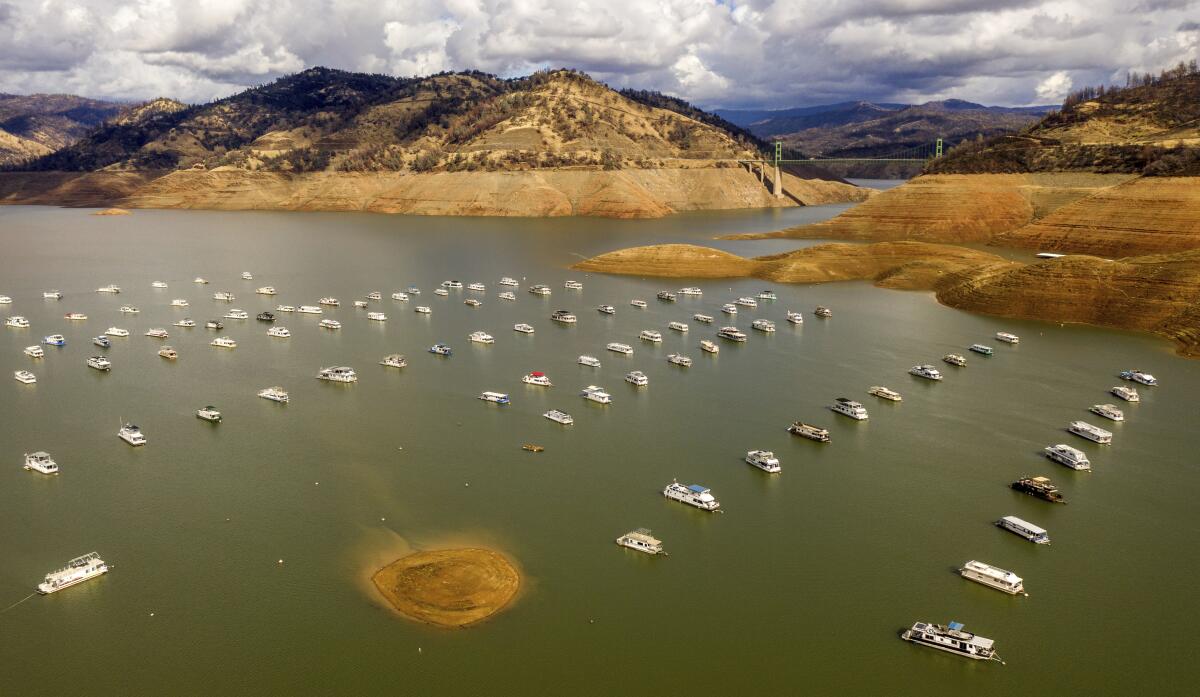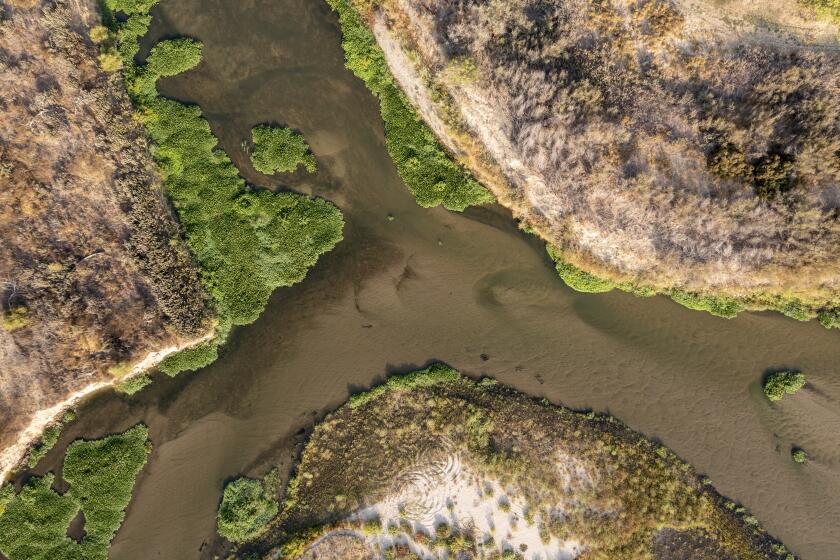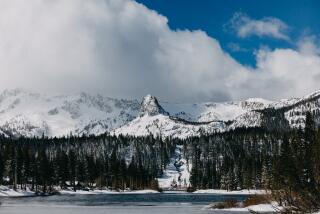Column: Climate change is distressingly real. But it’s not behind all major weather events

SACRAMENTO — It rained so hard in California in 1862 that a 300-mile-long lake was created in the Central Valley, stretching from Bakersfield to Red Bluff.
Yes, literally.
Leland Stanford needed a rowboat to carry him over Sacramento’s flooded streets to be sworn in as the new governor.
No, I didn’t cover it.
It was the largest flood in the recorded history of California, Nevada and Oregon. Over 43 days, the equivalent of 10 feet of water — rain and snow — was dumped on California. At least 4,000 people were killed.
It became known as the Great Flood of 1862.
A few years earlier, in 1846, a rare late October monster snowstorm socked the region around what later was named Lake Tahoe, leading to one of the ugliest chapters in California history.
A wagon train of California-bound Midwesterners was trapped by deep snow below the Sierra crest, at what became known as Donner Lake, named after one of the party’s leaders. Only 48 of the 87-member Donner Party survived the nearly four months of starvation, sickness and alpine cold.
The Donner Party earned a place in history for heroic perseverance. But it became best known for some starving survivors’ resorting to cannibalism, eating the corpses of those who perished.
OK, so what do these two disasters have to do with anything today? There’s one common thread between them that’s relevant: No one blamed the freak storms on climate change.
Column: California is spending billions on drought-related projects. And it’s not borrowing to do it
Politicians usually pay for water endeavors with borrowed money, not out of the general fund, columnist George Skelton writes.
They occurred long before anyone was burning fossil fuel in automobiles and warming the planet. They happened simply because of the nature of nature.
You don’t have to be a climate change denier to recognize and acknowledge history.
Yes, climate change is distressingly real. The melting Arctic ice cap and rising seas are evidence enough. So are higher average summer temperatures. The warming is exacerbated by humans burning fossil fuels.
That doesn’t mean global warming is the mother of every freak of nature. Not all major events are caused by climate change, regardless of what Gov. Gavin Newsom repeatedly asserts about the extremes of wetter and windier storms, dryer droughts and hotter wildfires.
Global warming creates drier air and helps parch vegetation that fuels horrific wildfires. But California’s forests have been mismanaged for more than a century.
Proof that climate change is not the primary cause of disastrous wildfires can be found in Baja California, Mexico. There’s a big mountain range that resembles the Sierra Nevada. But it’s healthy and fire-resilient because, until relatively recently, it was managed by nature, not humans.
Lightning-sparked fires were allowed to burn themselves out, cleaning the forest naturally and minimizing the blazes’ intensity. In the western U.S., we needed to douse fires immediately to protect growing towns, resorts and timber. And we’re just starting to get serious about clearing the forests and brushlands of dead trees and undergrowth that feed fires and make them more volatile.
Gov. Newsom declared a statewide drought emergency on Tuesday, which will help the state expedite drought relief projects, columnist George Skelton writes.
Sunday’s “bomb cyclone” poured more water on Sacramento in one day than has ever been recorded in history — 5.44 inches, equal to 27% of its average seasonal supply. There was record drenching all over Northern California. And Southern California’s months-long dry spell was broken.
How much did climate change contribute?
That won’t be known until about a year from now, state climatologist Michael Anderson says. The National Oceanic and Atmospheric Administration will study the deluge.
“We don’t have any clarity whether this was the beginning of a big wet year or just one big storm,” Anderson adds.
Jeffrey Mount, a water scientist at the Public Policy Institute of California, says that “a storm like this would have occurred with or without global warming.”
And Jay Lund, co-director of the UC Davis Center for Watershed Sciences, puts it this way:
“California has lots of extremes. We’ve always had more wet years and drier years than any part of the country. Every year at this time we’re managing for drought and for floods, and we always will. Look at the statistics.
“They show what everybody knows: California is weird.”
Lund says the storm “may have been made a little more intense by climate change. I wouldn’t be in the denial category. There was probably a modest influence.”
He notes that Newsom declared a statewide drought emergency right before the torrential storm hit. “It’s like washing your car and then it rains,” he says.
“If you’re going to have a big storm, this was the perfect time,” Lund says. “If the storm had been later in the season, it could have created sizeable flooding. Reservoirs could have been full. This would have been more exciting.”
Because it was the first big storm after two very dry years, much of the water soaked into the ground and didn’t become runoff roaring into downstream reservoirs, although enough water showed up to raise lake levels.
“The soil was like a dry sponge,” Mount says. “Now water will fall on a wet sponge and it will run off.”
Another benefit was that the storm dramatically increased the flow of water into San Francisco Bay, pushing salinity out of the Sacramento-San Joaquin Delta.
“We’re going to hear that it’s water wasted to sea,” Mount says. “But these people don’t understand how the delta works. When salinity is kept out, Los Angeles and the Bay Area get cleaner water.
“Everyone does better, including the critters that live in the delta.”
You can thank nature for what we received and what we didn’t: a Great Flood.
More to Read
Toward a more sustainable California
Get Boiling Point, our newsletter exploring climate change, energy and the environment, and become part of the conversation — and the solution.
You may occasionally receive promotional content from the Los Angeles Times.













